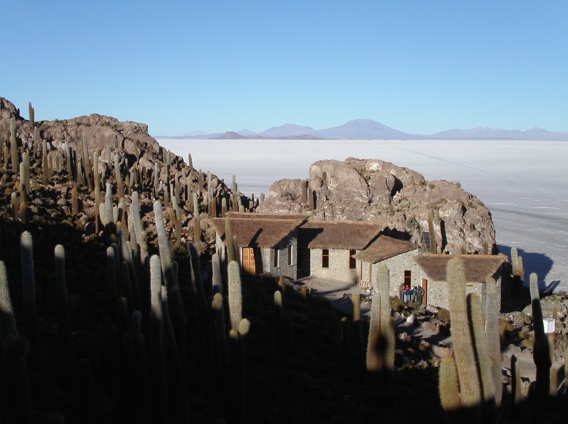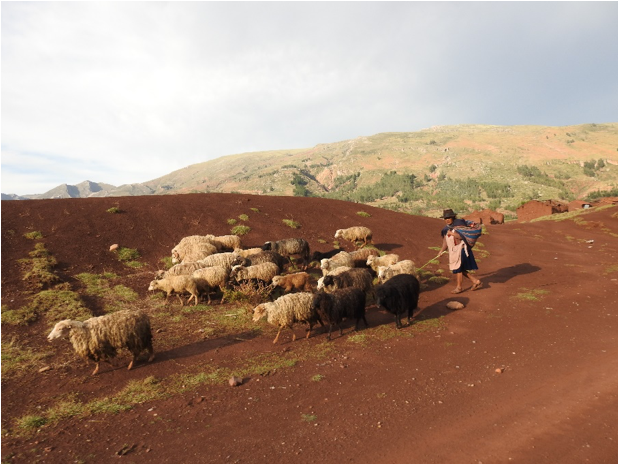Toward biodiversity-related opportunities for sustainable development: a global social-ecological mountain comparison
| What is PEGASuS?
The Program for Early-stage Grants Advancing Sustainability Science (PEGASuS) seeks increase knowledge, promote innovation, and establish evidence-based solutions to the world’s most difficult sustainability challenges. PEGASuS brings together researchers from across borders and the natural and social sciences to take creative approaches to exploring the relationships between people and the planet. Our goal is to generate self-sustaining research projects that will have real impacts on the health and wellbeing of human societies. This is the third in a series of five stories on PEGASuS: Biodiversity and Natural Assets. |
Toward biodiversity-related opportunities for sustainable development: a global social-ecological mountain comparison
By Davnah Payne, Mark Snethlage, Eva Spehn, and Markus Fischer
Mountains are exceptional in many ways and in particular in the extraordinary biological diversity they host and in the hundreds of millions of lives they support locally and in adjacent lowlands with vital goods and services, including the fresh water that these so-called water towers of the world provide. Moreover, after millennia of sociocultural evolution, mountains around the world offer an extremely rich ethnic and cultural diversity as well as fascinating examples of human and biological adaptation to extreme conditions.
Yet, changes in climate and land use, environmental pollution, large-scale political and socio-economic transformations, and unsustainable management of resources are gradually modifying mountain ecosystems, the conditions under which people interact with them, and the way this relationship unfolds. Accordingly, sustainable development scenarios are needed to safeguard the natural and social assets underpinning life in mountains and beyond and ultimately provide future generations of mountain inhabitants with livelihood options.
Our project contributes to the identification of biodiversity-related opportunities for sustainable development in mountains with ecological and social knowledge on the state of biodiversity and ecosystems in mountains worldwide and on the role of biodiversity for human wellbeing.
Global assessment on biodiversity, ecosystems, and human wellbeing in mountains
While biodiversity and ecosystem experts worldwide were collaboratively assessing available knowledge on biodiversity, ecosystem services, and their interlinkages at regional and global scale under the auspices of the Intergovernmental science-policy Platform on Biodiversity and Ecosystem Services (IPBES), we took on the challenge of collecting and assessing similar information for mountains. This was no easy task, for two reasons in particular. First, based on our inventory of the world’s mountains, there are not only very many mountain ranges worldwide, but they also differ very much in their history, geography, biophysical characteristics, as well as their cultural, social, and economic context. Second, we were interested in characterizing individual mountain ranges from both a biological and social point of view, which required us to find scientists able to cover the entire range of expertise from natural to social sciences for their mountain range.

With a year ahead of us, we opted for combining an online survey with a review of recent literature on mountain biodiversity, ecosystem services, human wellbeing, drivers of change, and interactions between nature and people. A year later, we have compiled the vast amount of information provided by around 150 experts, and pertaining to nearly as many mountain ranges, regions, and areas across the world and the very rich information from the literature. Ongoing analyses of expert perceptions are already revealing interesting results, including differences in the importance of various drivers of change along the elevational gradient – with climate change playing a more important role above the treeline and land use change below the treeline, and important interactions between drivers, with for instance land use change exacerbating the effects of climate on the invasive potential of species. Different patterns emerge across continents, with a tendency towards more degraded ecosystems in African mountains than in Asian, South American, and European ones.

Yet, results get particularly interesting when humans and human wellbeing adds to the equation. The survey for instance revealed that mountain biodiversity and ecosystem services strongly support the wellbeing of local communities but that many development initiatives to ameliorate human livelihoods locally in mountains (e.g. through the construction of roads and other infrastructures) can also have a negative impact on biodiversity. This suggests complex dynamics of trade-offs and synergies between conservation (of biodiversity and ecosystems) and development (in support of human wellbeing).
Growing demands on mountain people and ecosystems for the provision of low price commodities and goods renders the picture even more interesting, although more complex, as upstream processes elicited by socio-economic development in the lowlands differ between local contexts. For example, growing employment opportunities in the lowlands of Northern Laos lead to the rural exodus of poor mountain farmers who, by abandoning their lands, facilitate the spontaneous regeneration of native and biodiversity-rich mountain forests. Conversely, the case of the Wuling Mountains in China shows that urban expansion, economic growth, and changing lifestyles in the lowlands can result in increased demand for agricultural products and services from the mountains, leading to agricultural intensification and the development of hydropower infrastructure, which in turn affect natural mountain habitats negatively. Such processes also affect the wellbeing of mountain communities. In the Bali Highlands for instance, the introduction of cash crop monocultures reduces the communities’ resilience to extreme (weather) events, and reduces the quality of their nutrition, as a varied diet from subsistence agriculture is replaced by industrial food bought on the market with the income generated by the cash crops.
As the individual chapters of this first comparative mountain assessment are taking shape, new questions and project ideas arise, calling for additional data. Some will be collected in a recently launched follow-up project on mountain biodiversity and the Sustainable Development Goals. Yet, and despite gaps in this project’s coverage of the world’s mountains, the rich data at hand both support urgent calls for the sustainable management of mountain ecosystems (SDG 15.4) and offer comprehensive insights into the complex relation between nature and people in mountains worldwide.
If you want to get involved in ongoing efforts of the Global Mountain Biodiversity Assessment, don’t hesitate to contact us!
DATE
April 15, 2019AUTHOR
Davnah UrbachDr. Eva Spehn
Mark Snethlage
Markus Fischer
SHARE WITH YOUR NETWORK
RELATED POSTS
Spotlight on LMICs – Tired of Breathing in Pollutants? Time for Better Fuel Economy and Vehicle Standards
Future Earth Taipei Holds 2024 Annual Symposium
Spotlight on LMICs – The Future’s Juggernaut: Positioning Research as Anchors for Environmental Health